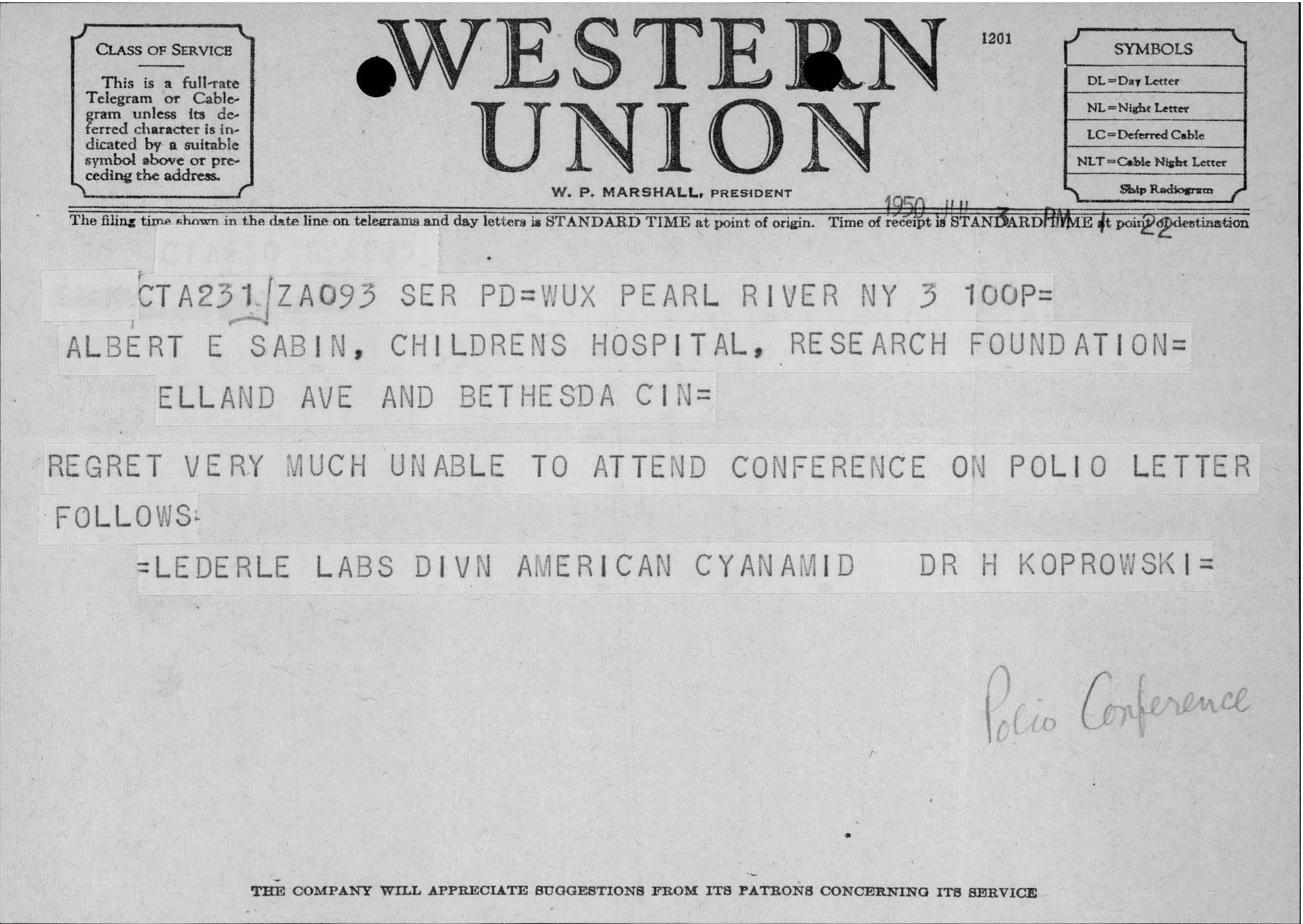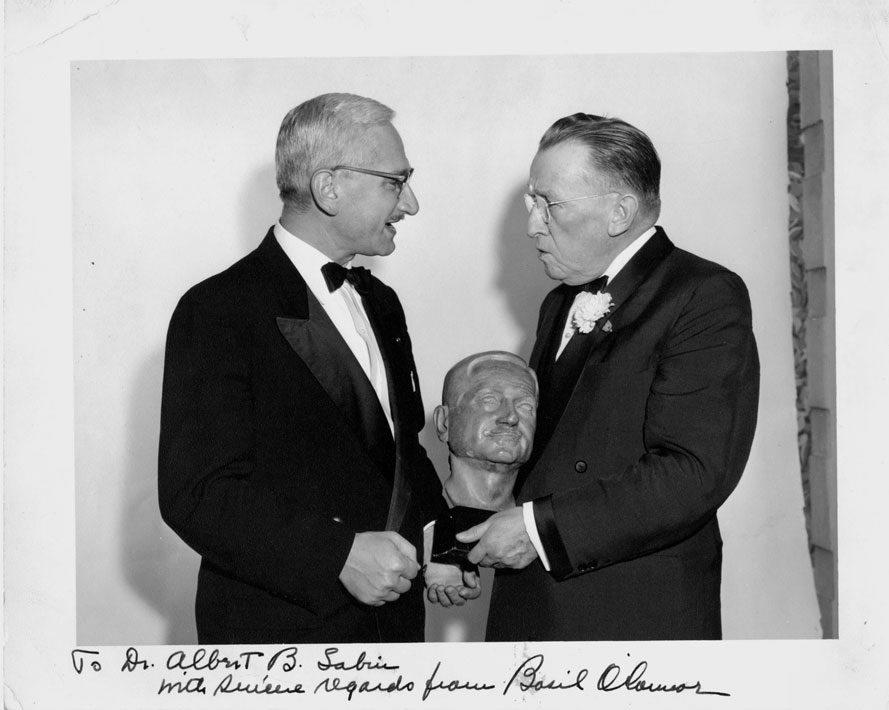By Jeff O’Flynn, Sabin Student Assistant

Telegram from Hilary Koprowski to Albert Sabin, indicating he would be unable to attend a polio conference.
Hilary Koprowski is considered by many to be equally important as Salk and Sabin in the quest to eradicate poliomyelitis. When Koprowski passed away last month, his illustrious career was recounted in his obituary and included such notable achievements as the development of a live-virus polio vaccine, improvement of the rabies vaccine, and directorship of the world-renowned Wistar Institute in Pennsylvania. His interest in the live-virus polio vaccine caused his career to overlap with Albert Sabin’s work regularly. The obituary details the competition between Sabin and Koprowski for the eventual triumph of their various polio vaccines.[1] Letters in the Albert B. Sabin archives indicate that the two great scientists often shared material and data though, unfortunately, they did not have an entirely conflict-free relationship. Continue reading



 Langsam Library to Offer Extended Exam Hours until 2am.
Langsam Library to Offer Extended Exam Hours until 2am.